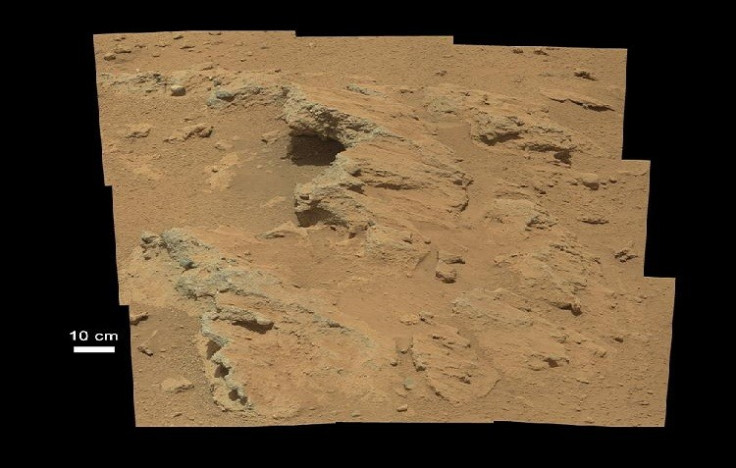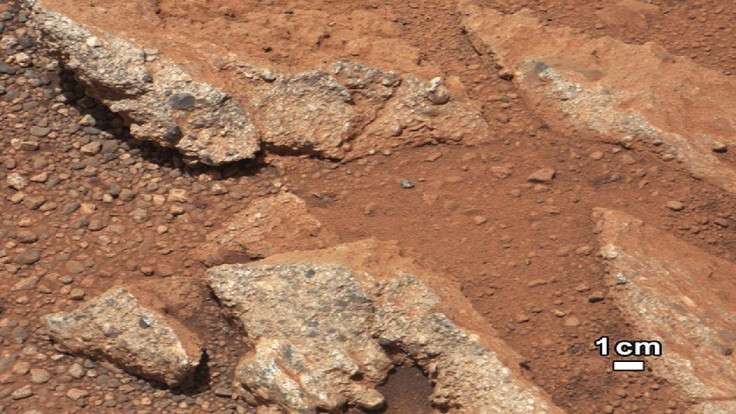Mars Curiosity Finds Ancient Rivers on Mars, Suggesting Life May Have Existed [PICTURES]

The discovery of ancient stream beds on Mars has re-opened the question of whether life ever existed on the red planet.
Pictures beamed back by the explorer vehicle Curiosity show collections of round pebbles cemented in two outcrops of rock. Some of the stones are only as big as a grain of sand, while others are the size of a golf ball.
Many of the stones are rounded, strongly suggesting they were shaped by the flow of water over them.
NASA scientists have analysed the stones and estimated that water once flowed at the rate of three metres per second along the stream, at roughly hip height.
Water is an essential building block for the existence of life, and a long flowing stream "can be a habitable environment, " stated a NASA spokesman.
"It is not our top choice as an environment for preservation of organics, though," he added.

"The shapes tell you [the rocks] were transported and the sizes tell you they couldn't be transported by wind. They were transported by water flow," said investigator Rebecca Williams in Arizona, USA.
"Plenty of papers have been written about channels on Mars with many different hypotheses about the flows in them. This is the first time we're actually seeing water-transported gravel on Mars."
Investigator William Dietrich said: "This is a transition from speculation about the size of stream bed material to direct observation of it."
The gravel was found in outcrops named Link and Hottah, which the Curiosity explorer photographed with its mast camera, during its first 40 days on the planet.

The slabs of rock, which were 10-15cm thick, were found by chance on Curiosity's route along the huge Gale Crater.
They lie between the northern rim of the crater and a giant mountain inside it called Mount Sharp, which is Curiosity's destination.
The mission is scheduled to take two years to complete, with 10 instruments on board NASA's moving laboratory to find out whether the Gale Crater ever had the right environment for the development of life.
NASA scientists have not had long to wait to uncover evidence of water. Exhaust fumes from Curiosity's thrusters churned up the top layer of dust as it trundled across the barren-looking planet on its mission.
© Copyright IBTimes 2025. All rights reserved.






















